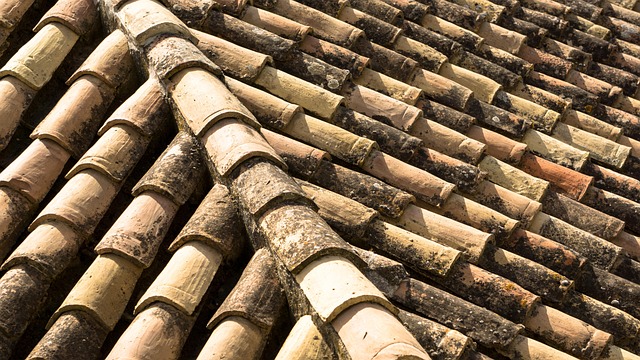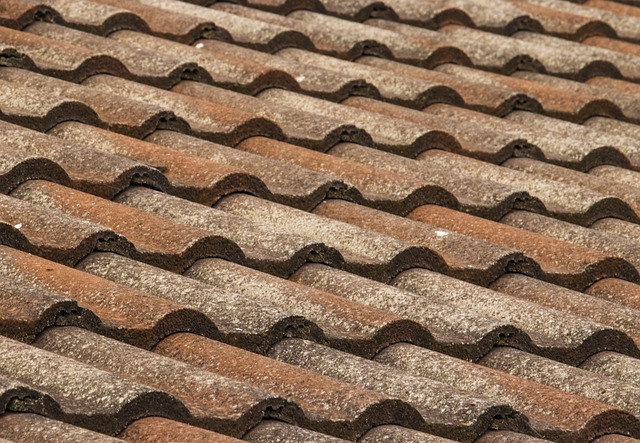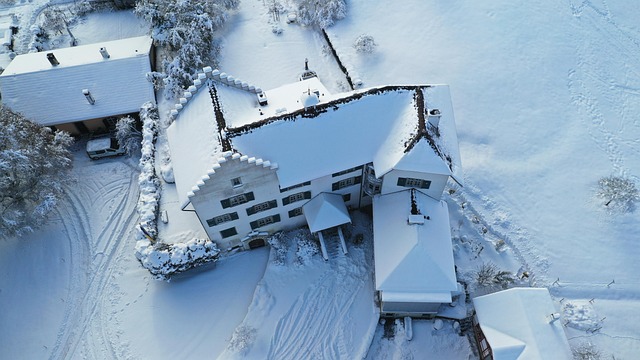Built-up roofing systems are a popular, durable choice for flat commercial buildings, featuring multiple layers of bitumen and reinforcement fabric. This multi-ply design enhances strength, provides superior insulation, and offers excellent protection against extreme weather conditions. Key components like bitumen ensure water-tightness, while gravel roofs add UV protection. Regular maintenance, including inspection and sealant application, is crucial for these long-lasting systems, which have proven their worth in various climates and architectural styles. Skilled labor and high-quality materials contribute to their extended lifespans, making built-up roofing a cost-effective solution for commercial properties.
“Discover the strength and versatility of built-up roofing systems, a prevalent choice for flat commercial roofs. This comprehensive guide explores the intricate layers that make up these robust structures, offering a unique combination of durability and cost-effectiveness. From understanding the foundational components to the step-by-step installation process, we delve into why built-up roofing is a preferred option for many. Explore the advantages, maintenance tips, and real-world case studies to gain valuable insights into this essential roofing solution.”
- Understanding Built-Up Roofing Systems: A Comprehensive Overview
- Components and Construction of Multi-Layered Built-Up Roofs
- Advantages and Benefits for Commercial Flat Roofs
- Installation Process: Step-by-Step Guide to Built-Up Roofing
- Maintenance and Repair Considerations for Longevity
- Case Studies: Success Stories of Built-Up Roofing Systems in Action
Understanding Built-Up Roofing Systems: A Comprehensive Overview

Built-up roofing systems are a common sight on flat commercial buildings, offering both durability and cost-effectiveness. These multi-layered roofs consist of alternating layers of bitumen and reinforcement fabrics, creating a strong and flexible structure. The process starts with a base sheet of waterproof material, followed by successive applications of bitumen and gravel or other reinforcing materials. This layering method enhances the roof’s strength, making it suitable for heavy loads and extreme weather conditions.
A key component in built-up roofing is bitumen roofing, which acts as the adhesive binding the layers together. Gravel roofs, comprising small aggregates embedded in the bitumen, provide additional protection against punctures and enhance the system’s overall stability. Multi-ply roofs, formed by multiple layers of this construction, offer superior insulation and a longer lifespan compared to traditional single-ply options. This comprehensive approach ensures that commercial buildings remain protected from environmental elements while optimizing maintenance and operational costs.
Components and Construction of Multi-Layered Built-Up Roofs

Multi-layered built-up roofs are a common sight on flat commercial buildings, offering both durability and protection against harsh weather conditions. These systems consist of multiple layers, each serving a specific function. The foundation layer typically starts with a sheet of smooth or corrugated asphalt, providing a protective barrier against moisture intrusion. This is followed by one or more layers of bitumen roofing, which acts as a sealant to prevent water leakage.
The uppermost layer involves a gravel roof, often consisting of coarse aggregate embedded in the final coating of bitumen. This combination creates a robust and flexible structure capable of withstanding significant weight and environmental stress. The multi-ply design not only enhances the roof’s longevity but also provides an effective insulation layer, contributing to energy efficiency within the building below.
Advantages and Benefits for Commercial Flat Roofs

Built-up roofing systems offer a multitude of advantages for commercial flat roofs, making them a popular choice among architects and property managers. The multi-ply design, often consisting of multiple layers of bitumen and fabric, provides exceptional durability and longevity. This robust structure can withstand extreme weather conditions, including heavy rainfall and strong winds, ensuring the building’s structural integrity remains intact.
Moreover, these roofing systems are highly versatile and adaptable to various commercial needs. The addition of a gravel roof on top can provide extra protection against UV rays and further enhance the system’s performance. Bitumen roofing, a key component, contributes to excellent water-tightness, preventing any seepage or damage to the building’s interior. This feature is especially beneficial for flat roofs, which are more susceptible to water-related issues. With their superior strength and protective layers, built-up roofing systems provide cost-effective solutions for commercial buildings, ensuring they remain in optimal condition for years.
Installation Process: Step-by-Step Guide to Built-Up Roofing

The installation of built-up roofing systems, a common and reliable choice for flat commercial roofs, involves several meticulous steps. It starts with preparing the substrate, ensuring it’s clean, dry, and free from any debris or imperfections. A layer of bitumen roofing, the foundation of this system, is then carefully unrolled and secured to the deck using specialized equipment. This initial ply serves as a protective barrier against moisture infiltration.
Subsequent layers are added in a methodical process. Each new layer comprises a combination of bitumen and a reinforcement fabric, such as a multi-ply roof or gravel roof. These layers are laminated together with more bitumen to create a robust, water-tight membrane. The final step involves applying a top coating, offering enhanced durability and protection from environmental factors. This meticulous installation process ensures the built-up roofing system provides excellent resistance against leaks and extreme weather conditions.
Maintenance and Repair Considerations for Longevity

Maintaining and repairing built-up roofing systems is essential to ensure their longevity on commercial buildings. These multi-ply roofs, constructed with alternating layers of bitumen and fabric, require regular inspection for any signs of damage, such as cracks, moisture intrusion, or missing granules. Prompt action on these issues is crucial to prevent further deterioration.
A key aspect of upkeep is ensuring the integrity of the gravel roof (or other protective surfaces) that caps the built-up roofing. This layer shields against UV radiation and weather exposure, slowing down the aging process. Regular reapplication of sealants and coatings can also help maintain the system’s water-tightness, a primary factor in extending the life of these robust roofing solutions.
Case Studies: Success Stories of Built-Up Roofing Systems in Action

In the realm of commercial building construction, built-up roofing systems have emerged as a reliable and versatile solution. These multi-ply roofs, often consisting of several layers including bitumen and gravel, have proven their mettle in countless case studies across various climates and architectural designs. From industrial warehouses to modern office complexes, builders and contractors have relied on the durability and cost-effectiveness of built-up roofing for decades.
A close examination of successful implementations reveals optimal performance attributed to precise installation techniques and regular maintenance. For instance, a recent study highlighted a commercial structure with a built-up roof that exceeded expectations, surpassing its expected lifespan by over 15 years due to meticulous upkeep. This success story underscores the value of investing in high-quality materials and skilled labor when employing bitumen roofing or gravel roofs. Such systems not only protect buildings from harsh elements but also contribute to long-term cost savings through their longevity and resistance to punctures, making them a reliable choice for flat commercial roofs.
